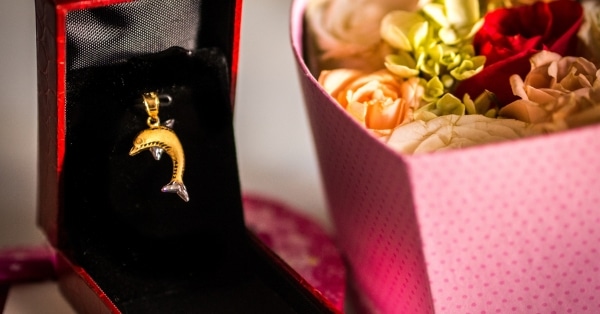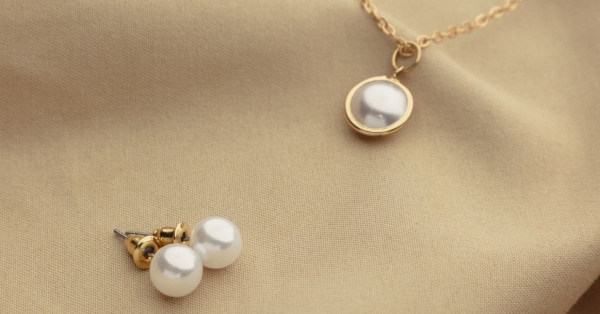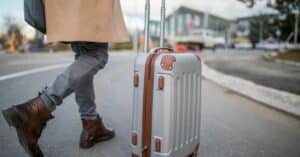Jewelry pricing is a dazzling kaleidoscope, influenced by a million shimmering facets. The simplest pieces, like silver earrings, can start under $50, while intricate gold necklaces encrusted with precious gems can soar into the millions. It’s all about a delicate dance between materials, craftsmanship, and brand prestige.
The type of metal (gold, platinum, silver), gemstones used (diamonds, sapphires, opals), and design complexity (simple band vs. intricate filigree) all play a starring role. Add in the jeweler’s reputation, shop location, and even current market trends, and you’ve got a price tag as unique as the piece itself.
Understanding the factors that drive jewelry prices can help you make an informed purchase. Join us as we delve into the world of jewelry, demystifying its costs and giving you the insight you need to find that perfect piece.
Factors Affecting Jewelry Cost
When it comes to determining the cost of jewelry, several variables come into play. These factors often interweave in complex ways, resulting in the wide range of prices you see in a jewelry store. Taking a closer look at these determinants will not only grant you a more in-depth understanding of jewelry value but also arm you with the knowledge to make astute purchases. Let’s explore the key factors that influence the cost of jewelry.
- Materials Used: The materials used in creating jewelry play a significant role in its cost. Precious metals like gold, silver, and platinum are highly valued for their rarity and durability, making them more expensive than other metals like copper or brass. Gemstones such as diamonds, rubies, emeralds, and sapphires also greatly impact the price of jewelry, with their size, clarity, and cut all factoring into the cost.
- Brand Prestige: The brand name of a piece of jewelry can significantly affect its price. Brands that have established themselves as high-end or luxury tend to charge premium prices for their pieces due to their reputation and perceived value.
- Craftsmanship: Jewelry made by highly skilled artisans will often command a higher price due to the time and effort put into creating each piece. Intricate designs, unique techniques, and attention to detail all contribute to the craftsmanship of a jewelry piece.
- Geographical Location: The cost of jewelry can also vary depending on where it is sold. In some countries, labor costs may be lower, resulting in cheaper prices for handmade items. Additionally, taxes and duties imposed on imported jewelry can increase its cost in certain regions.

Breakdown of Jewelry Types and Their Costs
As we delve into the breakdown of various types of jewelry and their associated costs, it’s crucial to understand that these prices are not set in stone. The cost of jewelry can be as diverse as the pieces themselves, from affordable costume jewelry to high-end luxury pieces.
Metals:
- Precious metals: Gold (currently ~$40/gram for 14k), Platinum (~$1,000/ounce), Silver (~$20/ounce) significantly impact cost.
- Less expensive options: Stainless steel, titanium, copper offer budget-friendly alternatives.
Gemstones:
- Type and carat weight: Diamonds (pricey!), emeralds, rubies, sapphires contribute significantly.
- Cut, clarity, and color: Higher quality aspects elevate the cost.
- No gemstones: Simpler pieces with no stones are generally more affordable.
Design:
- Complexity and intricacy: Elaborate designs with fine detailing cost more than basic styles.
- Handcrafted vs. mass-produced: Handcrafted pieces typically carry a higher price tag.
Brand:
- Designer labels and renowned brands: Expect premium prices for their reputation and exclusivity.
- Local artisans or smaller brands: Often offer unique pieces at more competitive prices.
Additional factors:
- Antique or vintage jewelry: Can be valuable due to their age and historical significance.
- Sentimental value: Personal attachment can influence perceived worth, regardless of monetary cost.
Jewelry price range can vary drastically, from a few dollars for simple pieces to tens of thousands for high-end designs with precious metals and gemstones.
Remember, shopping around, considering alternative materials, and looking for sales can help you find beautiful jewelry within your budget.
How to Determine if Jewelry is Worth the Price
As mentioned earlier, the cost of jewelry is influenced by various factors, making it essential to understand how to evaluate its value before making a purchase. Here are some tips to help you determine if jewelry is worth the price:
- Research: Do your research on the type of jewelry you’re interested in and compare prices across different brands and retailers.
- Inspect Quality: Examine the quality of materials and craftsmanship of the jewelry. Look for any visible flaws or imperfections that may affect its value.
- Consider Timelessness: Classic, timeless designs tend to retain their value over time, making them a worthwhile investment.
- Ask for Certification: For expensive pieces like diamonds, ask for a certification from a reputable gemological institute to verify their authenticity and value.
Tips on Buying Cost-Effective Jewelry
If you’re looking to purchase jewelry without breaking the bank, here are some tips on how to find good deals and cost-effective pieces:
- Shop During Sales: Keep an eye out for sales or discounts at your favorite jewelry stores. This can be an excellent opportunity to snag a piece at a lower price.
- Consider Alternative Metals: Instead of gold or silver, consider jewelry made from alternative metals such as titanium, tungsten, or stainless steel. These options are not only more affordable but also durable and stylish.
- Opt for Lab-Grown Gems: Lab-grown diamonds and gemstones can be a more cost-effective option compared to their natural counterparts, with prices up to 30% lower.
- Shop Secondhand: Consider purchasing pre-owned jewelry from reputable sellers or auction houses or like Jewelry and the Sea. You can often find unique, high-quality pieces at a fraction of the original cost.
Conclusion
The cost of jewelry is influenced by a variety of factors, making it essential to understand these determinants to make informed purchases. By considering the materials used, brand prestige, craftsmanship, and geographical location, you can better understand why some pieces of jewelry are more expensive than others
. Remember to always do your research and inspect the quality before making a purchase, and consider cost-effective options if you’re on a budget. With these tips, you can confidently navigate the world of jewelry and find pieces that not only suit your style but also fit your budget.














